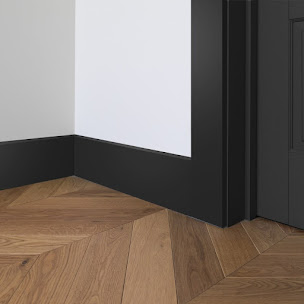The Impact of Acoustic Underlay on Flooring
An Acoustic Underlay is used to soundproof floors and stop feet from bothering rooms below, as well as airborne sounds like music, TV, and conversation from leaving the room. Since airborne as well as impact noise cannot be eliminated by one layer, acoustic underlays must be composed of multiple materials. If you merely want to reduce impact or airborne noise, you can also purchase an acoustic underlay with single layers. If preferred, these can be utilized in addition to standard carpet underlay.
Reduced impact noise from objects dropping, footfall, and furniture movement across hard surface finishes for floors in any kind of structure is the only purpose of an acoustic flooring underlay. A thin layer of material, including fiber, felt, rubber, or foam, is known as an underlayment or flooring underlayment. The thin layer of material lessens wear on your flooring and aids in sound absorption, insulation, and cushioning.
Both residential and commercial buildings should take sound reduction measures into account when designing and building their structures. If you want to keep your home or place of business peaceful, quiet, and serene, you really need these. When noise is produced inside your building, it will be taken in, reflected, and transmitted by your floors, ceiling, and walls.
You may counteract this decline in effectiveness and get the greatest soundproofing through your acoustic insulation by using many layers of varying densities and thicknesses. It is crucial to keep in mind that impact noise management strategies for heavy-duty buildings may not be effective for lightweight constructions and that each structure will have a different acoustic base performance. A carpet can be laid immediately on top of any of the acoustical layers, as well as the acoustic mats that were previously described. A growing number of people are turning to acoustic underlay as a way to lower noise levels in both commercial and residential settings.
Role of Acoustic Underlay on Flooring:
Acoustic Carpet Underlay absorbs sound and lessens noise transmission, it can be very beneficial to acoustics. Sound waves can travel through materials and be transmitted, absorbed, or reflected when they strike them. The purpose of the carpet underlay is to soak up sound waves and lessen the quantity of sound that travels under the floor and reaches adjacent rooms or areas.
- Moisture seeping into your house through the subfloor is one of the fastest ways to destroy your floors. Luxury vinyl tiles and hardwood floors are especially prone to dampness and water damage. Water vapor and moisture are prevented from penetrating your flooring materials with the use of underlayment.
- For the installation of top flooring materials such as laminate, vinyl, nearly luxury vinyl tiles, carpets, and even hardwood flooring, the underlayment offers a smooth surface. An underlayment offers a better platform for top-floor installation when the subfloor is not always level and smooth. Through the damping of footsteps, an underlay also functions as a sound insulator. In addition, you can shield your floor from moisture harm or lessen wear and strain on it by using an underlay.
- By creating a thick, dense, insulating layer of felt, cork, rubber, or another substance between the floor cover and the subfloor, they reduce sound by collecting sound energy before it can enter the rooms below.
- Acoustic floor underlays are perfect for apartments, buildings with multiple floors, or any other place where noise reduction is a priority since they can dramatically lower the amount of noise that is transmitted by the floor.
- To benefit from a quality acoustic underlayment's performance, you don't need to reside in a multifamily building. DIY homeowners can reduce the amount of sound that enters their houses by using Acoustic Underlay For Carpet. Your most-used rooms can benefit from having an acoustic underlayment installed to help keep noise out of your relaxing areas. In this manner, you can take in the tranquility on the ground floor while the youngsters are able to play upstairs.
How to Choose The Acoustic Underlay:
The choice of flooring product itself is nearly always prioritized over the choice of flooring accessories, such as adhesives, transition strips, and underlayment. For example, you wouldn't start with an acoustic underlay and work your way down. Rather, you should consider all of the requirements for your application, such as durability, acoustics, moderate or high traffic, and aesthetics, and select the flooring material that will perform and add value over the course of its lifetime.
With the purpose of lessening impact noise from furniture movements and foot traffic on laminate, light engineered wood, and solid timber floors, we created our Acoustic Laminate Underlay. Hard floor surfaces are prone to impact noise generation and airborne particles. Therefore, it is recommended to use an effective sound absorber, like an acoustic laminate underlay, below these surfaces to minimize noise disturbance for individuals below.




Comments
Post a Comment